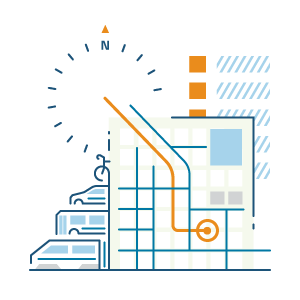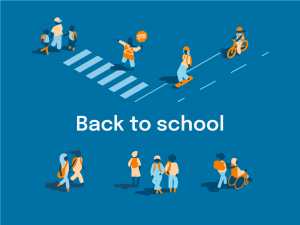
Public Transport: A Backbone of Sustainable Development
Public transport is more than a mode of travel; it’s a cornerstone for creating sustainable and inclusive communities. The United Nations’ 17 Sustainable Development Goals (SDGs) are global objectives designed to address poverty, inequality, health, education, and climate change by 2030. Public transit systems address a few of these by bridging communities, providing affordable access to essential services like jobs, healthcare, and education. This is particularly vital for individuals who cannot drive due to financial constraints, age, physical limitations, or psychological barriers.

A healthier society is a happier society. Cleaner air and calmer environments reduce stress and contribute to overall well-being. Regardless of socioeconomic status, we all desire cities where our families can thrive—places that are greener, healthier, and more equitable. Frequent, accessible and safe public transport is essential to this vision.
How broad an impact can abundant and efficient public transit have towards achieving the UN SDG goals?

In terms of environmental impact, public transit plays a transformative role. By emitting less greenhouse gases per passenger than private vehicles, public transit is critical to achieving SDG 13: Climate Action. Transitioning to battery-operated or hybrid public vehicles, expanding networks, and adopting green technologies and energies will reduce emissions and help cities combat climate change.

Less reliance on cars also improves air quality, promotes more active lifestyles through walking and cycling, and reduces the urban footprint dedicated to parking and urban heat islands, aligning with SDG 11: Sustainable Cities and Communities.

Affordable, reliable public transit supports SDG 1: No Poverty, by breaking down barriers to economic progress.

SDG 8: Decent Work and Economic Growth is supported by well planned public transit networks connecting people to employment opportunities.

Similarly, SDG 10: Reduced Inequalities is advanced by ensuring equitable access for those who are unable to drive, fostering more inclusive and interconnected societies and communities.
This shift towards more sustainable public transit requires collaboration among governments, businesses, and communities. Investing in infrastructure, embracing sustainable technologies and prioritizing equitable access are essential to maintaining public transit as a vital resource to continue growing and staying independent for the vulnerable populations in our communities, while also providing high-quality transportation options for those choosing to leave their cars at home. As individuals, choosing public transport, supporting policies for better bus and rail networks, and advocating for sustainable mobility are steps we can all take toward a shared, greener future.
Public transit is not just a convenience, it’s a lifeline for progress for our communities. It drives sustainable development, creating a better, happier, more equitable future for everyone. To learn more about transit’s role in achieving the SDGs, visit UITP’s article.

Want to work with us? Feeling inspired?
Contact us at info@dcrdesign.net or checkout our social medias: LinkedIn, X and Instagram
For more information visit:
UN Sustainable Development Goals & Publiv Transport.




